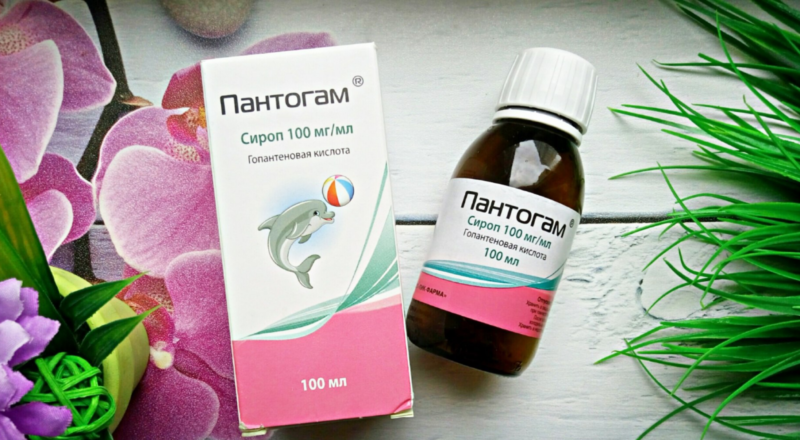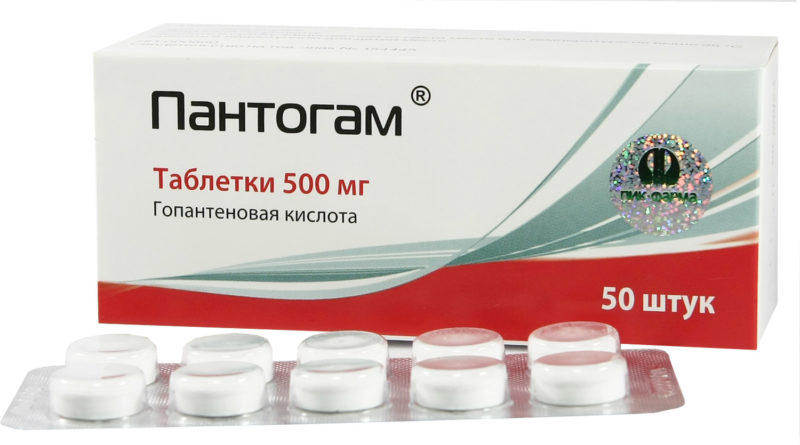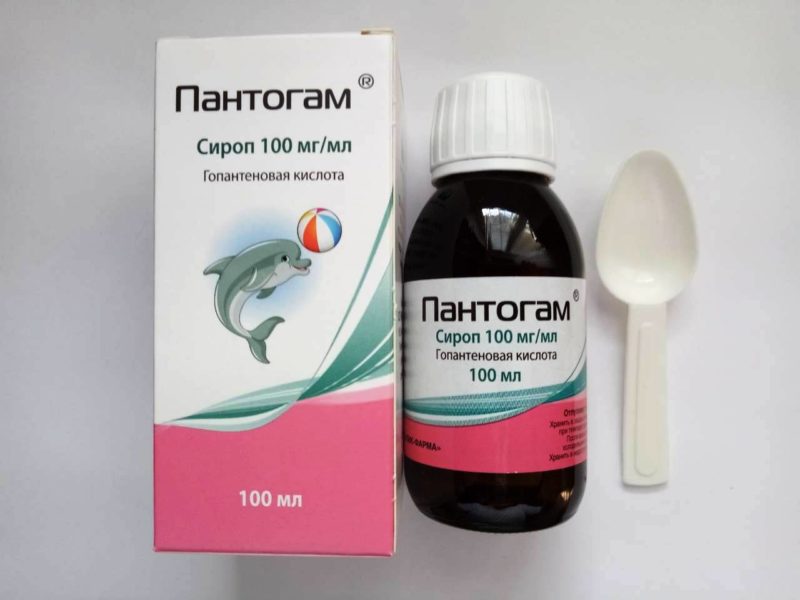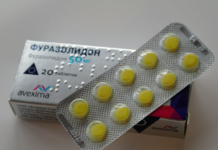Disruptions in metabolic processes in brain tissue are a serious pathology that requires immediate treatment. A similar disorder occurs in childhood, mainly due to a genetic predisposition. That is why it is important to know why Pantogam is prescribed for children, as well as what pharmacological effect it has.
Material Content:
Description of release forms and composition
The Nootropic preparation Pantogam is developed on the basis of calcium hopantenate (calcium salt of hopantenic acid). This substance is an artificially synthesized component, however, it belongs to the group of vitamins.
The medicine is produced in the following forms:
- tablets of 250, 500 mg;
- 300 mg capsules;
- syrup 10 g per 100 ml.
In addition to the main compound, Pantogam tablets are enriched with a number of additional substances: magnesium hydroxycarbonate, calcium stearate, talc, cellulose. The syrup also contains sorbitol, glycerol, cherry flavoring, aspartame, sodium benzoate and citric acid.
Why are Pantogam prescribed to children
Pantogam refers to nootropic drugs with an anticonvulsant effect. Such drugs can prevent oxygen starvation of the brain. The range of prescriptions for this drug is quite wide, however the main indication is a violation of higher nervous activity in a child.
- All forms of mental retardation, developmental delay, dementia (oligophrenia).
- ADHD
- Various neuroses (stuttering, nervous tic).
- Bouts of epilepsy.
- Cerebral palsy.
- Disturbed urination due to neurogenic disorders, enuresis.
- Schizophrenia.
- Antipsychotic syndrome.
- Perinatal encephalopathy.
- Traumatic brain injuries.
- Cognitive impairment after neuroinfection.
- Negative toxic effects on the brain.
- Cerebral insufficiency.
And also this drug is in demand with strong psycho-emotional stress and overload, during a period of reduced performance and mental activity. Often, indications for admission are various distortions of behavioral reactions and hyperkinetic disorders. It is advisable for newborns to prescribe this drug if it has hypoxic damage to brain cells caused by oxygen deficiency.
Pantogam syrup can also be prescribed to infants after asphyxiation, entwining with the umbilical cord or various injuries during childbirth. Pantogam is extremely in demand for treating babies who have poor learning ability, tobacco or alcohol syndrome, poor reflexes, heavy falling asleep, and poor chest uptake.
Instructions for use and dosage
As a rule, Pantogam for infants is prescribed only in the form of a syrup. Children under three years of age should be given medication twice a day after feeding. It is not advisable to give Pantogam just before bedtime. Up to a year, the dosage is calculated by the weight of the child - 30-50 mg / 1 kg. The duration of the therapeutic course is at least one month and largely depends on the diagnosis.
Syrup or tablets are taken as follows:
- infants and children up to a year - one spoon (5-10 ml);
- from a year to three years - 1-2.5 tablespoons (5-12 ml);
- from three to seven years - 1.5-3 tablespoons (7.5-15 ml) or 1.5-3 tablets of 500 mg;
- from seven to 15 years - 2-4 tablespoons (10-20 ml) or 2-4 tablets of 500 mg each;
- adolescents - 4-6 tablespoons (15-30 ml) or 3-6 tablets of 500 mg.
The treatment regimen is that the first week the amount of the drug increases, then from two weeks to two months the maximum dosage is drunk. And then comes a gradual decrease in the amount, which takes about a week, and then the drug is completely canceled. Patients with epilepsy need to undergo regular examinations and monitor blood counts. If necessary, it is allowed to repeat the course of treatment, but only after six months.
Drug interaction
According to the instructions, it is not recommended to combine Pantogam with other nootropic drugs or agents that forcibly stimulate the nervous system. For complex therapy, concurrent administration of anticonvulsant medications is often prescribed. Pantogam is also able to reduce the risk of negative effects from taking antipsychotics or barbiturates and increase the effects of local anesthetics. For more effective treatment, Glycine is often prescribed.
Contraindications, side effects and overdose
This drug is highly safe, but there are a number of contraindications for all forms of Pantogam.
- Diseases of the kidneys and urinary system in an acute form.
- Children's age up to three years (for tablets).
- Genetic intolerance to fermentopathies and the diagnosis of phenylketonuria (for syrup, because it contains aspartame).
- Inadequate response of the immune system to component composition.
As a rule, Pantogam does not provoke the development of undesirable reactions. However, with prolonged use, the risk of side effects is not excluded. Most often, patients suffer from an allergic reaction, which manifests itself in the form of rash and conjunctivitis. Other phenomena are possible: insomnia, dizziness, noise in the head, lethargy, lethargy, or, conversely, hyperactivity. In the case of pronounced negative effects, it is necessary to cancel the drug.
In the event of a significant excess of the prescribed dosage, the patient may experience signs of an overdose. A similar condition is characterized by side effects from the nervous system: apathy, lethargy, dizziness attacks.The victim must seek medical help and further symptomatic therapy, which includes gastric lavage, activated charcoal intake.















